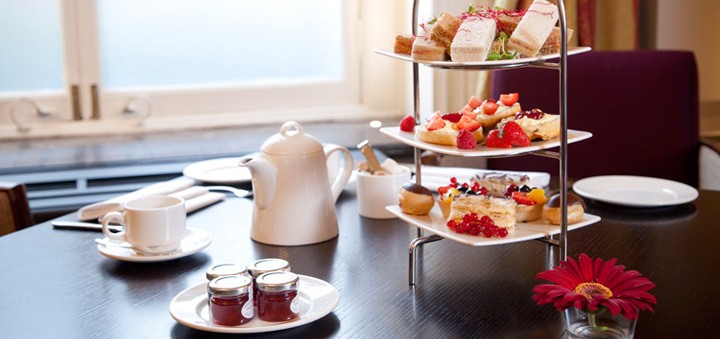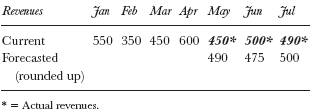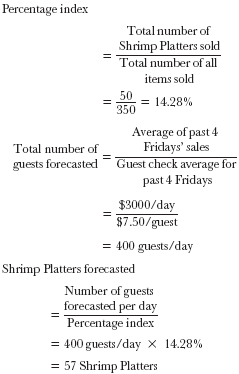1. Forecasting
Forecasting is very important in restaurant operation. It is to project sales and costs for short- term and long-term needs base on the historical data. Some forecasting is used in scheduling employees, planning food and supply orders, corresponding with marketing efforts, etc. Forecasting can be done by using quantitative or qualitative method. Two components of forecasting are Guest counts and average guest check.
(a) Occupancy Statistics
Cover+ a guest
Number of turns= Number of covers/ number of seats
(b) Average restaurant check
= Food and Beverage Sales/ Number of Covers
The following are the examples of forecasting used in restaurant:
(c) Adjustment method
It involves taking some prior interval as a base period and adjusting it with a certain number determined by management. For example, the percentage of general inflation in the economy is used as the adjustment factor. When introducing a new food product, a company might use the percentage of additional sales expected from a new food product as the basis of the adjustment factor.
(d) Moving average method
The average of the past four accounting periods is selected as the basis for forecasting. The length of the accounting period can be varied base on the restaurant need. Revenues for May were projected by taking the average of the preceding four months, then compared the actual revenues of that month.
(e) Forecasting of food
Forecasting can place in purchaseing orders for food, paper, supplies etc. For example, it can estimate the necessary purchase quantities of various food-related items.
- Use forecasting methods to determine forecasted sales.
- Calculate the quantity of food needed.
To determine the amount of food needed, the ‘yield’ factor for each food item is known, is the amount of sales yielded by a unit of food. It could be sales per pound in the case of meats, or sales per bag of apples, etc.
Yield is calculated by dividing the total sales for (say) the past week by the amount of the product used. All inventory units are changed to purchase units before ordering.
2. Forecasting menu items
A restaurateur must know the percentage of each menu item compared with the total number of items sold.
- Taking the average number of menu items sold for the past four weeks and dividing it by the average number of specific menu items sold during that period.
- Estimating the number of guests expected for a specific day.
- Multiplying the total number of guests expected with the percentage index.
3. Food cost control process
(a) Menu Planning
It is essential to write a menu that offers enough choices at the right price and style. “The menu items should highlight the strengths of your kitchen staff and avoid their weaknesses.” Also in order to make it efficiently, kitchen layout should be set up properly.
(b) Forecasting
It is used to forecast the production level and sales base on the historical data.
(c) Purchasing
It involves procuring the products and services that restaurants need to serve the customers. The purchasing agent should work closely with the chef and manager to determine what, when and how much of products to order. A list of all food items, including product specifications, preferred vendors and price history should be written. Also the par stock and purchase order are needed to know in this section.
(d) Receiving
It is to ensure the quantity, quality, price and suppliers are exactly as ordered. It is very important.
(e) Storing
Dry storage areas should be well ventilated and pest-free with sufficient space and light. Refrigerators and freezers should be checked oftenly for correct temperatures and cleanliness. All storage areas should be organized and rotated regularly. Also, Storage areas should also be monitored.
(f) Issuing
The products are taken from the storage area to kitchen.
(g) Production
The food is cooked for the ingredients. In this section, cleanliness is important. So the hands of person who handle the food should be clean.
(h) Service
The food is delivered to customers.
(i) Sales
The sales generated for each food sold.
4. Food Cost Analysis
In this section, fixed costs and variable costs are determined. Fixed cost is constant no matter how much food is produced. Variable costs is varied base on the volume of business. After collect the sales and cost, balance sheet and income statement are made in order to reflect the assets and liabilities relate to owners’ equity and see the sales budgeted.




